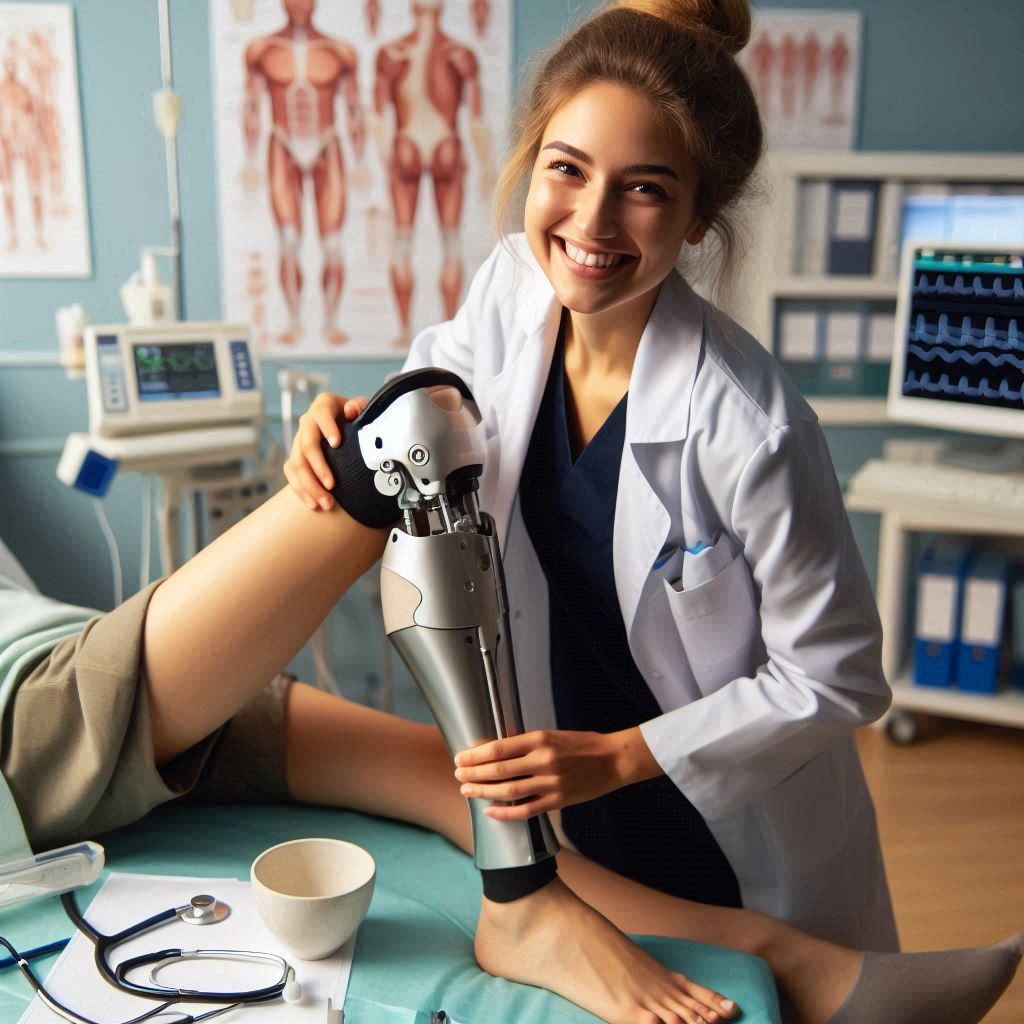Introduction
Nuclear medicine technologists perform imaging tests that help diagnose and treat diseases.
Joining professional associations is crucial for networking and staying updated in the field.
Benefits of Joining Professional Associations
- Networking Opportunities: Being part of a professional association allows nuclear medicine technologists to connect with colleagues, experts, and potential employers.
- Continuing Education: Professional associations offer access to conferences, workshops, and online resources to help technologists stay current in their field.
- Career Advancement: Membership in a professional association can provide opportunities for career advancement through certifications, training programs, and job postings.
- Advocacy: These organizations advocate for the profession, working to ensure that nuclear medicine technologists have a voice in healthcare policy and legislation.
- Mentorship: Many professional associations offer mentorship programs that pair experienced technologists with those who are new to the field, providing valuable guidance and support.
- Recognition: Being part of a professional association can enhance a technologist’s credibility and reputation within the industry.
- Stay Informed: Professional associations provide members with updates on the latest research, technology, and best practices in nuclear medicine.
- Leadership Opportunities: Technologists can develop leadership skills by getting involved in committees, task forces, and board positions within the association.
Being a member of a professional association is essential for nuclear medicine technologists to grow professionally, stay informed, and make valuable connections in the field.
Overview of professional associations for nuclear medicine technologists
Professional associations play a crucial role in the nuclear medicine technologist community by providing support, education, and networking opportunities.
Popular professional associations
The Society of Nuclear Medicine and Molecular Imaging (SNMMI) is one of the most popular professional associations for nuclear medicine technologists.
It is a professional organization that aims to promote the field of nuclear medicine and molecular imaging through education, advocacy, and research.
Professional associations like SNMMI serve as a valuable resource for nuclear medicine technologists by offering a range of benefits and opportunities.
These associations provide members with access to continuing education programs, certifications, and networking events that can help them stay current in their field and advance their careers.
Purpose of these associations in providing support, education, and networking opportunities
One of the primary purposes of professional associations for nuclear medicine technologists is to support the professional development of their members.
These associations offer a variety of resources, such as webinars, conferences, and publications, to help members stay informed about the latest developments in the field and enhance their skills and knowledge.
Professional associations also play a crucial role in advocating for the interests of nuclear medicine technologists and promoting the importance of their work in healthcare.
By working together, members of these associations can amplify their voices and have a greater impact on policy decisions and industry standards.
Networking is another key aspect of professional associations for nuclear medicine technologists.
These organizations provide members with opportunities to connect with their peers, share knowledge and best practices, and collaborate on research projects and initiatives.
Networking can help technologists build relationships, gain mentorship, and explore new career opportunities.
Overall, professional associations for nuclear medicine technologists serve as a vital support system for individuals in the field, offering a range of benefits and resources to help them succeed in their careers and make a positive impact on the healthcare industry.
Read: Sleep Disorders Diagnosed by Technologists
Benefits of joining a professional association
Joining a professional association in the field of nuclear medicine technology offers numerous benefits:
Access to Industry Updates and Advancements
- Stay informed about the latest developments in nuclear medicine technology.
- Access cutting-edge research and advancements in the field.
- Be at the forefront of new technologies and trends in nuclear medicine.
Opportunities for Continuing Education and Professional Development
- Participate in conferences, workshops, and seminars to enhance your knowledge and skills.
- Gain access to training programs and certifications to further your career.
- Stay current with best practices and guidelines in nuclear medicine technology.
Networking with Other Professionals
- Connect with peers in the industry to exchange ideas and share experiences.
- Build a strong professional network that can lead to career opportunities.
- Collaborate on projects and research initiatives with other professionals in the field.
Overall, being a member of a professional association can provide you with the support, resources, and connections needed to excel in your career as a nuclear medicine technologist.
It’s a valuable investment that can open up doors to new opportunities and help you stay competitive in this constantly evolving field.
Transform Your Career Today
Unlock a personalized career strategy that drives real results. Get tailored advice and a roadmap designed just for you.
Start NowRead: Technological Tools for Sleep Technologists
Membership requirements for professional associations
When it comes to professional associations for nuclear medicine technologists, there are certain membership requirements that individuals must meet in order to join these organizations.
Education and Certification Requirements
One of the primary requirements for joining professional associations for nuclear medicine technologists is having the appropriate education and certification.
Most associations require members to have completed an accredited nuclear medicine technology program and to hold the appropriate certification, such as the Nuclear Medicine Technologist (NMT) certification.
Membership Fees and Renewal Process
Membership fees are another important aspect of joining professional associations.
Members are usually required to pay an annual fee in order to maintain their membership status.
Additionally, there is often a renewal process that members must go through each year to continue their association membership.
Specific Criteria for Joining Certain Associations
Some professional associations may have specific criteria that individuals must meet in order to join.
For example, certain associations may require members to have a minimum number of years of experience in the field or to have completed a certain number of continuing education credits.
It is important for individuals to carefully review the criteria for each association they are considering joining to ensure they meet the requirements.
Overall, the membership requirements for professional associations for nuclear medicine technologists help to ensure that members are qualified and committed to the field.
By meeting these requirements, technologists can benefit from networking opportunities, continuing education resources, and professional development opportunities that these associations provide.
Read: Sleep Technologist Work Schedule Overview

Resources and Opportunities Provided by Professional Associations
Professional associations play a crucial role in supporting nuclear medicine technologists by providing various resources and opportunities to help them enhance their skills, knowledge, and career prospects.
Conferences, Workshops, and Webinars for Knowledge and Skill-Building
Professional associations organize regular conferences, workshops, and webinars focused on the latest advancements and best practices in nuclear medicine technology.
These events provide technologists with opportunities to network with industry experts, learn about cutting-edge technologies, and enhance their practical skills.
By attending these sessions, technologists can stay updated on the latest trends in the field and improve their overall proficiency in nuclear medicine technology.
Job Boards and Career Guidance for Nuclear Medicine Technologists
Professional associations often maintain job boards and career centers where technologists can explore job opportunities in the field of nuclear medicine.
These platforms also offer career guidance, resume building tips, and interview preparation resources to help technologists advance in their careers.
Showcase Your Business Today
Reach thousands of readers actively exploring professional services. Publish your business profile and grow your audience now.
Publish NowBy leveraging these resources, technologists can find new employment opportunities, transition to higher roles, or explore new career paths within the industry.
Research Grants and Funding Opportunities
Professional associations provide technologists with access to research grants and funding opportunities to support their research endeavors and academic pursuits.
These grants enable technologists to conduct research studies, publish scientific papers, and contribute to the advancement of nuclear medicine technology.
By securing research funding through professional associations, technologists can explore innovative ideas, collaborate with peers, and make significant contributions to the field.
Overall, professional associations serve as valuable resources for nuclear medicine technologists, offering a wide range of opportunities to support their professional growth, career development, and research aspirations.
Read: How to Excel as a Nuclear Medicine Technologist
Delve into the Subject: Top Skills Needed for a Successful Sonographer Career
Involvement in advocacy and policy-making
Professional associations play a crucial role in advocating for the field of nuclear medicine technologists in various ways:
Role of Professional associations in advocating for the field of Nuclear Medicine Technologists
Professional associations play a crucial role in advocating for nuclear medicine technologists.
They represent the interests of technologists at various governmental and regulatory levels.
These associations work to ensure that the profession is recognized and valued.
They lobby for legislation that benefits nuclear medicine technologists and their patients.
Advocacy efforts focus on maintaining high standards of practice and patient care. They also strive to secure funding for research and educational programs.
By voicing the concerns and needs of technologists, these associations help shape the future of the field.
Opportunities for members to participate in shaping policies and regulations
Professional associations offer numerous opportunities for members to get involved in policy-making. Members can join advocacy committees and task forces.
They can participate in lobbying efforts and meet with legislators. These activities allow members to directly influence policies affecting their profession.
Associations also provide training on effective advocacy techniques. Members can learn how to communicate their perspectives and expertise to policymakers.
By engaging in these efforts, technologists can help shape regulations that impact their work environment and patient care.
Active participation in advocacy ensures that technologists’ voices are heard.
Influence on research and practice guidelines
Professional associations significantly influence research and practice guidelines in nuclear medicine.
They fund and support research projects that advance the field. By prioritizing important research areas, they help set the agenda for scientific inquiry.
Associations also develop and update practice guidelines to reflect the latest evidence and technology.
These guidelines help standardize care and ensure best practices.
By involving members in guideline development, associations ensure that guidelines are practical and relevant.
This collaborative approach leads to more effective and widely accepted standards.
Overall, professional associations play a vital role in shaping the direction of research and clinical practice.
Professional associations’ involvement in advocacy and policy-making benefits the field of nuclear medicine technologists.
Their efforts ensure the profession’s growth and the highest standards of patient care.
Conclusion
Professional associations play a crucial role in the career development of nuclear medicine technologists.
One prominent association is the Society of Nuclear Medicine and Molecular Imaging Technologist Section (SNMMI-TS).
SNMMI-TS provides networking opportunities, continuing education, and resources for nuclear medicine technologists.
Another notable association is the American Registry of Radiologic Technologists (ARRT), which offers certification and credentialing for technologists.
Membership in these associations can enhance credibility, knowledge, and skill development for technologists.
By joining professional associations, nuclear medicine technologists can stay updated with industry trends and advancements.
These associations offer access to conferences, workshops, and publications that can aid in professional growth.
Networking opportunities provided by associations can lead to career advancement and job opportunities for technologists.
Joining professional associations in the field of nuclear medicine technology is essential for career advancement.
Nuclear medicine technologists are encouraged to explore membership in relevant professional associations to enhance their skills and knowledge.
[E-Books for Sale]
The Big Book of 500 High-Paying Jobs in America: Unlock Your Earning Potential
$19.99 • 500 High-Paying Jobs • 330 pages
Explore 500 high-paying jobs in America and learn how to boost your career, earn more, and achieve success!
See All 500 High-Paying Jobs of this E-Book
1001 Professions Without a Degree: High-Paying American Jobs You Can Start Now
$19.99 • 1001 Professions Without a Degree • 174 pages
Discover 1001 high-paying jobs without a degree! Unlock career tips, skills, and success strategies for just $19.99!




